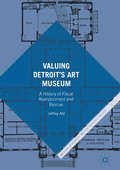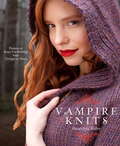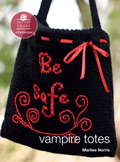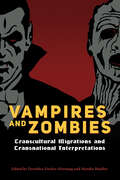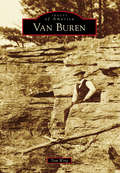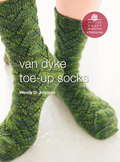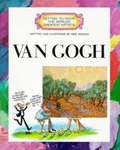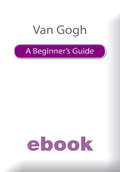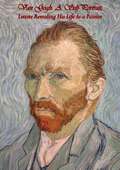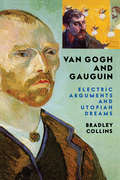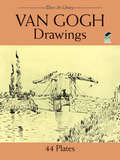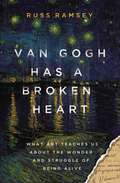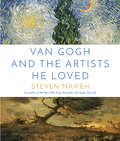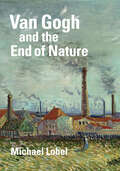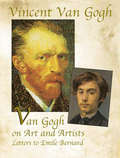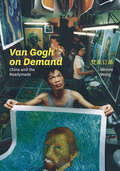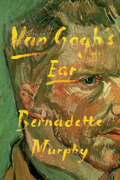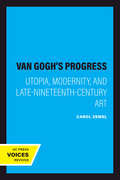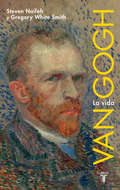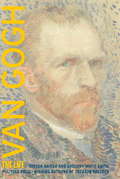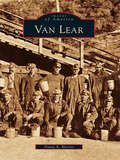- Table View
- List View
Values in Landscape Architecture and Environmental Design: Finding Center in Theory and Practice (Reading the American Landscape)
by M. Elen DemingThe successful realization of diversity, resilience, usefulness, profitability, or beauty in landscape design requires a firm understanding of the stakeholders' values. This collection, which incorporates a wide variety of geographic locations and cultural perspectives, reinforces the necessity for clear and articulate comprehension of the many factors that guide the design process. As the contributors to this collection reveal, dominant and emerging social, political, philosophical, and economic concerns perpetually assert themselves in designed landscapes, from manifestations of class consciousness in Napa Valley vineyards to recurring themes and conflicts in American commemorative culture as seen in designs for national memorials. One essay demonstrates the lasting impact of the doctrine of Manifest Destiny on the culture and spaces of the Midwest, while another considers the shifting historical narratives that led to the de-domestication and subsequent re-wilding of the Oostvaardersplassen in the Netherlands. These eleven essays help foster the ability to conduct a balanced analysis of various value systems and produce a lucid visualization of the necessary tradeoffs. Offering an array of case studies and theoretical arguments, Values in Landscape Architecture and Environmental Design encourages professionals and educators to bring self-awareness, precision, and accountability to their consideration of landscape designs.
Values in Sex Education: From Principles to Practice
by Michael Reiss Mark HalsteadSex education is rarely out of the news. Despite this, there exist surprisingly few studies of the principles, policies and practice of sex education. This book provides such an examination, focusing on the values to which children are exposed in sex education. Sex education inevitably involves the transmission of values, regardless of whether this is intended by teachers. Throughout the book, academic and professional literature on both values and sex education is reviewed and discussed. The authors look at the implicit liberal values, which underpin programmes of sex education, and at the challenges presented by the diversity of values in contemporary society. The book also considers:* Why values are central to sex education* Children's voices and children's values* Religious and family values* Achievable aims for school sex education* How to help young people to reflect critically on the influences to which they are exposed and on their own developing sexual values * How to build values into practical approaches to sex education at both primary and secondary levels.This timely book will help all those involved in sex education to steer a path between controversial and often opposing views and will be essential reading for students on PGCE and BEd courses. It will also be a valuable resource for teachers and professionals involved in teaching sex education such as teachers of personal and social education, form tutors, heads of year, school nurses, health workers and academics.
Valuing Detroit’s Art Museum
by Jeffrey AbtThis book explores the perilous situation that faced the Detroit Institute of Arts during the city's bankruptcy, when creditors considered it a "nonessential asset" that might be sold to settle Detroit's debts. It presents the history of the museum in the context of the social, economic, and political development of Detroit, giving a history of the city as well as of the institution, and providing a model of contextual institutional history. Abt describes how the Detroit Institute of Arts became the fifth largest art museum in America, from its founding as a private non-profit corporation in 1885 to its transformation into a municipal department in 1919, through the subsequent decades of extraordinary collections and facilities growth coupled with the repeated setbacks of government funding cuts during economic downturns. Detroit's 2013 bankruptcy underscored the nearly 130 years of fiscal missteps and false assumptions that rendered the museum particularly vulnerable to the monetary power of a global art investment community eager to capitalize on the city's failures and its creditors' demands. This is a remarkable and important contribution to many fields, including non-profit management and economics, cultural policy, museum and urban history, and the histories of both the Detroit Institute of Arts and the city of Detroit itself. Despite the museum's unique history, its story offers valuable lessons for anyone concerned about the future of art museums in the United States and abroad.
Vampire Knits: Projects to Keep You Knitting from Twilight to Dawn
by Genevieve MillerSurrender to the allure of knits inspired by the immortals we all love to fear. If you adoreTwilight, True Blood,orThe Vampire Diaries, this collection of 28 imaginative and beautiful projects is sure to captivate. bull; Black capes are so 1897, instead get stylish with the dead sexy Sidhe Shrug. bull; Unleash your inner shapeshifter with the Werewolf Hat. bull; Keep warm while holding hands with your vampire by wearing these Bellisima Mittens. bull; Around humans? Use the Blood Bottle Cozies to disguise your beverage. Whether you are wandering the Carpathian Mountains or the bayous of Louisiana, these smoldering projects-for knitters of all levels-will keep you well protected, no matter what you attract.
Vampire Totes: E-Pattern from Vampire Knits (Potter Craft ePatterns)
by Marilee NorrisKnitting instructions.
Vampires and Zombies: Transcultural Migrations and Transnational Interpretations
by Dorothea Fischer-Hornung and Monika MuellerThe undead are very much alive in contemporary entertainment and lore. Indeed, vampires and zombies have garnered attention in print media, cinema, and on television. The vampire, with roots in medieval European folklore, and the zombie, with origins in Afro-Caribbean mythology, have both undergone significant transformations in global culture, proliferating as deviant representatives of the zeitgeist.As this volume demonstrates, distribution of vampires and zombies across time and space has revealed these undead figures to carry multiple meanings. Of all monsters, vampires and zombies seem to be the trendiest--the most regularly incarnate of the undead and the monsters most frequently represented in the media and pop culture. Moreover, both figures have experienced radical reinterpretations. If in the past vampires were evil, blood-sucking exploiters and zombies were brainless victims, they now have metamorphosed into kinder and gentler blood-sucking vampires and crueler, more relentless, flesh-eating zombies.Although the portrayals of both vampires and zombies can be traced back to specific regions and predate mass media, the introduction of mass distribution through film and game technologies has significantly modified their depiction over time and in new environments. Among other topics, contributors discuss zombies in Thai films, vampire novels of Mexico, and undead avatars in horror videogames. This volume--with scholars from different national and cultural backgrounds--explores the transformations that the vampire and zombie figures undergo when they travel globally and through various media and cultures.
Van Buren (Images of America)
by Tom WingThe town of Van Buren was first named after the area post office established in 1831 in honor of Martin Van Buren. The town, which grew up on the Arkansas River, officially took its name when the city was incorporated in 1842. Van Buren's "golden age" occurred in the mid-19th century as steamboats brought settlers, migrating Native Americans, slaves, and European immigrants to the frontier. With Indian Territory (Oklahoma) nearby, Van Buren was an entry point to the West, not unlike St. Louis and Kansas City. After the Civil War, railroads replaced the steamboat as the main mode of transportation and resource distribution across the country. Later, Interstate 40 was built, bisecting the town and contributing to the city's heritage as a transportation center.
Van Dyke Toe-Up Socks: ePattern from Socks from the Toe Up (Potter Craft ePatterns)
by Wendy D. JohnsonInstructions for making toe-up socks.
Van Gogh (Getting to Know the World's Greatest Artists)
by Mike VeneziaThis easy to follow biography is great for all ages of Vincent Van Gogh the master of brining paintings to life. Talks about his life, and details his work in simple language for children and beginners to the art world. Worth a look if you are an art lover.
Van Gogh A Beg Guide (BGKF)
by Andrew ForrestVincent Van Gogh had a profound gift of communication, and he remains an icon of modern art to this day. This book will explore Van Gogh's life, influences, English connections, painting techniques, perceptions of Van Gogh and the continuing Van Gogh phenomenon.
Van Gogh A Self-Portrait: Letters Revealing His Life As a Painter
by Vincent Van GoghThe poet W. H. Auden selected this collection of Van Gogh's personal letters on those which addressed the most important fact of his life: that he was a painter of pictures—pictures that changed the direction of modern art. This selection are confined to Van Gogh's reflections on the art of painting and the problems of being a painter. The letters to his family members are included insofar as they reflect on his life as a painter.-Print ed.
Van Gogh And Gauguin: Electric Arguments And Utopian Dreams
by Bradley CollinsAlthough Vincent van Gogh's and Paul Gauguin's artistic collaboration in the south of France lasted no more than two months, their stormy relationship has continued to fascinate art historians, biographers, and psychoanalysts as well as film-makers and the general public. Van Gogh and Gauguin explores the artists' intertwined lives from a psychoana
Van Gogh Drawings: 44 Plates
by Vincent Van GoghChoice drawings -- from early impressions of peasant life to studies for Starry Night, other masterpieces. 44 black-and-white illustrations. Captions.
Van Gogh Has a Broken Heart: What Art Teaches Us About the Wonder and Struggle of Being Alive
by Russ RamseyBeyond a mere introduction to great art, Van Gogh Has a Broken Heart is about loving to learn what art has to teach us about the wonder and struggle of being alive.Did you know that:Vincent van Gogh's attempt to start an artist's colony with Paul Gauguin lasted only nine weeks, ending in his infamous "ear episode"?Pablo Picasso was a prime suspect in the disappearance of the Mona Lisa?Artemisia Gentileschi was tortured with thumbscrews to verify her testimony at her own rapist's trial?Norman Rockwell's critics said his work would never be accepted as "high art"--and he agreed?These stories--and many more--shaped the work these artists left behind. In their art are lessons common to the human experience about the wonder and struggle of being alive: dreams lost, perspectives changed, and humility derived through suffering.??In Van Gogh Has a Broken Heart, Russ Ramsey digs into these artists' stories for readers who may be new to art, as well as for lifelong students of art history, to mine the transcendent beauty and hard lessons we can take from their masterpieces and their lives. Each story from some of the history's most celebrated artists applies the beauty of the gospel in a way that speaks to the suffering and hope we all face.
Van Gogh and the Artists He Loved
by Steven NaifehThe compelling story of how Vincent van Gogh developed his audacious, iconic style by immersing himself in the work of others, featuring hundreds of paintings by Van Gogh as well as the artists who inspired him—from the New York Times bestselling co-author of Van Gogh: The Life&“Important . . . inspires us to look at Van Gogh and his art afresh.&”—Dr. Chris Stolwijk, general director, RKD–Netherlands Institute for Art History Vincent van Gogh&’s paintings look utterly unique—his vivid palette and boldly interpretive portraits are unmistakably his. Yet however revolutionary his style may have been, it was actually built on a strong foundation of paintings by other artists, both his contemporaries and those who came before him. Now, drawing on Van Gogh&’s own thoughtful and often profound comments about the painters he venerated, Steven Naifeh gives a gripping account of the artist&’s deep engagement with their work. We see Van Gogh&’s gradual discovery of the subjects he would make famous, from wheat fields to sunflowers. We watch him experimenting with the loose brushwork and bright colors used by Édouard Manet, studying the Pointillist dots used by Georges Seurat, and emulating the powerful depictions of the peasant farmers painted by Jean-François Millet, all vividly illustrated in nearly three hundred full-color images of works by Van Gogh and a variety of other major artists, including Claude Monet, Paul Gauguin, and Henri de Toulouse-Lautrec, positioned side by side. Thanks to the vast correspondence from Van Gogh to his beloved brother, Theo, Naifeh, a Pulitzer Prize winner, is able to reconstruct Van Gogh&’s artistic world from within. Observed in eloquent prose that is as compelling as it is authoritative, Van Gogh and the Artists He Loved enables us to share the artist&’s journey as he created his own daring, influential, and widely beloved body of work.
Van Gogh and the End of Nature
by Michael LobelA groundbreaking reassessment that foregrounds Van Gogh’s profound engagement with the industrial age while making his work newly relevant for our world today Vincent van Gogh (1853–1890) is most often portrayed as the consummate painter of nature whose work gained its strength from his direct encounters with the unspoiled landscape. Michael Lobel upends this commonplace view by showing how Van Gogh’s pictures are inseparable from the modern industrial era in which the artist lived—from its factories and polluted skies to its coal mines and gasworks—and how his art drew upon waste and pollution for its subjects and even for the very materials out of which it was made. Lobel underscores how Van Gogh’s engagement with the environmental realities of his time provides repeated forewarnings of the threats of climate change and ecological destruction we face today. Van Gogh and the End of Nature offers a radical revisioning of nearly the full span of the artist’s career, considering Van Gogh’s artistic process, his choice of materials, and some of his most beloved and iconic pictures. Merging a timely sense of environmental urgency with bold new readings of the work of one of the world’s most acclaimed artists, this book weaves together detailed historical research and perceptive analysis into an illuminating portrait of an artist and his changing world.
Van Gogh and the Post-Impressionists for Kids: Their Lives and Ideas, 21 Activities
by Carol SabbethVincent van Gogh's admiration for and departure from Impressionism and his relationships with the other enthusiastic, like-minded artists who ultimately formed the Post-Impressionist movement are explained and explored in this collection of art activities for kids. Debunking the persistent stereotype of the mad pauper who cut off his ear, van Gogh is revealed as the serious boy who loved nature and reading and spoke four languages; the young man who took great satisfaction in the study of art, his successful career as a gallery salesman, and the "brotherhood of artists" he helped to create; and the increasingly troubled and ill man who cared deeply for family and friends and tried in vain to recover. Through a series of fun and creative projects, such as a Starry Night Peep Box, a Pointillist Sailboat, and a Japanese Fold-out Album, kids will be exposed to such art as van Gogh's vibrant landscapes, Paul Signac's Mediterranean Sea images in dazzling dots, and Paul Gauguin's tropical landscapes in unnatural colors. Aspiring young artists and history buffs will learn whether or not these famous painters always got along, how they helped each other in the process, and what made Post-Impressionist art unlike anything ever painted.
Van Gogh on Art and Artists: Letters to Emile Bernard
by Vincent Van GoghThese letters, written from 1887 to 1889, are among the most important and relevant sources of insight into van Gogh's life and art. 23 missives, accompanied by reproductions of a number of his major paintings and facsimiles from his letters, radiate their author's impulsiveness, intensity, and mysticism. Chronology. Select Bibliography. Index. 32 full-page black-and-white illustrations.
Van Gogh on Demand: China and the Readymade
by Winnie Won Yin WongIn a manufacturing metropolis in south China lies Dafen, an urban village that famously houses thousands of workers who paint van Goghs, Da Vincis, Warhols, and other Western masterpieces for the world market, producing an astonishing five million paintings a year. To write about work and life in Dafen, Winnie Wong infiltrated this world, first investigating the work of conceptual artists who made projects there; then working as a dealer; apprenticing as a painter; surveying wholesalers and retailers in Europe, East Asia and North America; establishing relationships with local leaders; and organizing a conceptual art exhibition for the Shanghai World Expo. The result is Van Gogh on Demand, a fascinating book about a little-known aspect of the global art world--one that sheds surprising light on the workings of art, artists, and individual genius. Confronting big questions about the definition of art, the ownership of an image, and the meaning of originality and imitation, Wong describes an art world in which idealistic migrant workers, lofty propaganda makers, savvy dealers, and international artists make up a global supply chain of art and creativity. She examines how Berlin-based conceptual artist Christian Jankowski, who collaborated with Dafen's painters to reimagine the Dafen Art Museum, unwittingly appropriated the work of a Hong Kong-based photographer Michael Wolf. She recounts how Liu Ding, a Beijing-based conceptual artist, asked Dafen "assembly-line" painters to perform at the Guangzhou Triennial, neatly styling himself into a Dafen boss. Taking the Shenzhen-based photojournalist Yu Haibo's award-winning photograph from the Amsterdam's World Press Photo organization, she finds and meets the Dafen painter pictured in it and traces his paintings back to an unlikely place in Amsterdam. Through such cases, Wong shows how Dafen's painters force us to reexamine our preconceptions about creativity, and the role of Chinese workers in redefining global art. Providing a valuable account of art practices in an ascendant China, Van Gogh on Demand is a rich and detailed look at the implications of a world that can offer countless copies of everything that has ever been called "art. "
Van Gogh's Ear
by Bernadette MurphyThe best-known and most sensational event in Vincent van Gogh's life is also the least understood. For more than a century, biographers and historians seeking definitive facts about what happened on a December night in Arles have unearthed more questions than answers. Why would an artist at the height of his powers commit such a brutal act? Who was the mysterious "Rachel" to whom he presented his macabre gift? Did he use a razor or a knife? Was it just a segment--or did Van Gogh really lop off his entire ear? In Van Gogh's Ear, Bernadette Murphy reveals, for the first time, the true story of this long-misunderstood incident, sweeping away decades of myth and giving us a glimpse of a troubled but brilliant artist at his breaking point. Murphy's detective work takes her from Europe to the United States and back, from the holdings of major museums to the moldering contents of forgotten archives. She braids together her own thrilling journey of discovery with a narrative of Van Gogh's life in Arles, the sleepy Provençal town where he created his finest work, and vividly reconstructs the world in which he moved--the madams and prostitutes, café patrons and police inspectors, shepherds and bohemian artists. We encounter Van Gogh's brother and benefactor Theo, his guest and fellow painter Paul Gauguin, and many local subjects of Van Gogh's paintings, some of whom Murphy identifies for the first time. Strikingly, Murphy uncovers previously unknown information about "Rachel"--and uses it to propose a bold new hypothesis about what was occurring in Van Gogh's heart and mind as he made a mysterious delivery to her doorstep. As it reopens one of art history's most famous cold cases, Van Gogh's Ear becomes a fascinating work of detection. It is also a study of a painter creating his most iconic and revolutionary work, pushing himself ever closer to greatness even as he edged toward madness--and one fateful sweep of the blade that would resonate through the ages.
Van Gogh's Progress: Utopia, Modernity, and Late-Nineteenth-Century Art (California Studies in the History of Art #36)
by Carol ZemelThis title is part of UC Press's Voices Revived program, which commemorates University of California Press’s mission to seek out and cultivate the brightest minds and give them voice, reach, and impact. Drawing on a backlist dating to 1893, Voices Revived makes high-quality, peer-reviewed scholarship accessible once again using print-on-demand technology. This title was originally published in 1997.This title is part of UC Press's Voices Revived program, which commemorates University of California Press’s mission to seek out and cultivate the brightest minds and give them voice, reach, and impact. Drawing on a backlist dating to 1893, Voices Revived</DIV
Van Gogh: A Beginner's Guide (A\beginner's Guide Key Figures Ser.)
by Andrew ForrestVincent Van Gogh had a profound gift of communication, and he remains an icon of modern art to this day. This book will explore Van Gogh's life, influences, English connections, painting techniques, perceptions of Van Gogh and the continuing Van Gogh phenomenon.
Van Gogh: La vida
by Steven Naifeh Gregory White SmithPor fin, el retrato completo del incomparable maestro. Vida, muerte y genialidad de la mano de dos ganadores del premio Pulitzer Van Gogh trabajó como marchante de arte con escaso éxito, intentó convertirse en predicador, hizo incursiones como ilustrador de revistas y, por último, tuvo una carrera de pintor tan brillante como corta. Cuando murió en Francia a los 37 años sus cuadros se amontonaban, sin que casi nadie los mirase, en los armarios, desvanes y habitaciones de sus parientes, amigos y acreedores. Sin embargo, en su breve y tempestuosa vida, Vincent van Gogh había cambiado el curso del arte occidental para siempre. Trabajando con la plena colaboración del Museo Van Gogh de Ámsterdam, Steven Naifeh y Gregory White Smith, ganadores del Premio Pulitzer por su biografía de Jackson Pollock, han tenido acceso a materiales inéditos, incluyendo correspondencia familiar hasta ahora desconocida, para recrear, con increíble viveza y una sorprendente precisión psicológica, la extraordinaria vida del pintor. Los autores arrojan nueva luz sobre muchos de los aspectos inexplorados de la existencia de Van Gogh: su permanente lucha para encontrar su lugar en el mundo, su intensa relación con su hermano Theo, su errática y tumultuosa vida sentimental y sus ataques de depresión y problemas mentales. Ofrecen además un convincente e inesperado relato sobre las circunstancias de su muerte que da un vuelco a las teorías manejadas hasta ahora. Esta monumental biografía es, sin duda, el retrato definitivo de uno de los grandes genios de la historia del arte. La crítica ha dicho...«Para esta generación, el retrato definitivo del pintor. El logro más importante de Naifeh y Smith es haber logrado un ajuste de cuentas con la -locura- ocasional de Van Gogh que no pierde de vista la lucidez y la inteligencia -la profunda cordura- de su arte.»Time «Una biografía que se lee como una novela, llena de suspense y detalles íntimos.»The Washington Post «En su magistral nueva biografía Steven Naifeh y Gregory White Smith ofrecen una visita guiada por el mundo personal y la obra de este pintor holandés, iluminando la evolución de su arte a la vez que elaboran una teoría sobre su muerte destinada a crear controversia.»The New York Times «Cautivador... Los autores reconstruyen vívidamente las historias entrelazadas de su vida y su arte, retratándolo como una "víctima de su propio corazón fanático". Su excelente libro tiene el potencial no sólo de revitalizar el interés popular por Van Gogh, sino de presentar a uno de los espíritus más valiosos de la historia del arte a toda una nueva generación.»The Wall Street Journal «Una nueva teoría sobre la muerte de Vincent van Gogh puede acabar reescribiendo la historia del arte... Después de leer cientos de documentos, de libros traducidos para ellos por el museo Van Gogh y de recorrer la correspondencia del artista, la obra dibuja a un hombre más complejo de lo mostrado hasta la fecha.»El País
Van Gogh: The Life
by Steven Naifeh Gregory White SmithSteven Naifeh and Gregory White Smith, who galvanized readers with their Pulitzer Prize–winning biography of Jackson Pollock, have written another tour de force—an exquisitely detailed, compellingly readable portrait of Vincent van Gogh. Working with the full cooperation of the Van Gogh Museum in Amsterdam, Naifeh and Smith have accessed a wealth of previously untapped materials to bring a crucial understanding to the larger-than-life mythology of this great artist: his early struggles to find his place in the world; his intense relationship with his brother Theo; and his move to Provence, where he painted some of the best-loved works in Western art. The authors also shed new light on many unexplored aspects of Van Gogh’s inner world: his erratic and tumultuous romantic life; his bouts of depression and mental illness; and the cloudy circumstances surrounding his death at the age of thirty-seven. Though countless books have been written about Van Gogh, no serious, ambitious examination of his life has been attempted in more than seventy years. Naifeh and Smith have re-created Van Gogh’s life with an astounding vividness and psychological acuity that bring a completely new and sympathetic understanding to this unique artistic genius. NEW YORK TIMESBESTSELLER Praise forVan Gogh: The Life “Magisterial. ”—Michiko Kakutani, The New York Times “This generation’s definitive portrait of the great Dutch post-Impressionist. ”—Time “A tour de force . . . an enormous achievement . . . Reading his life story is like riding an endless roller coaster of delusional highs and lows. . . . [A] sweepingly authoritative, astonishingly textured book. ”—Los Angeles Times “Marvelous . . . [Van Gogh] reads like a novel, full of suspense and intimate detail. . . . In beautiful prose, Naifeh and Smith argue convincingly for a subtler, more realistic evaluation of Van Gogh, and we all win. ”—The Washington Post “Brilliant . . . At once a model of scholarship and an emotive, pacy chunk of hagiography. ”—The Daily Telegraph(London) ANEW YORK TIMESNOTABLE BOOK NAMED ONE OF THE BEST BOOKS OF THE YEAR BYTHE WASHINGTON POST • THE WALL STREET JOURNAL • SAN FRANCISCO CHRONICLE• NPR •THE ECONOMIST • NEWSDAY• BOOKREPORTER
Van Lear
by Danny K. BlevinsVan Lear was a sparsely populated farm community at the dawn of the 20th century. Known originally as Miller's Creek, its pastoral nature was soon lost as it transformed into a thriving municipality. John C. C. Mayo, a young schoolmaster, was the force behind this development. With his geologic knowledge and his forward-looking business savvy, he foresaw the economic power of the veins of bituminous coal that lay undisturbed in much of Eastern Kentucky. Mayo and a small nucleus of businessmen acquired vast tracts of land and mineral rights. In the case of Miller's Creek, these holdings were sold to a corporate behemoth, the Consolidation Coal Company (Consol). Mayo became one of Kentucky's wealthiest citizens, and Miller's Creek became Van Lear.


